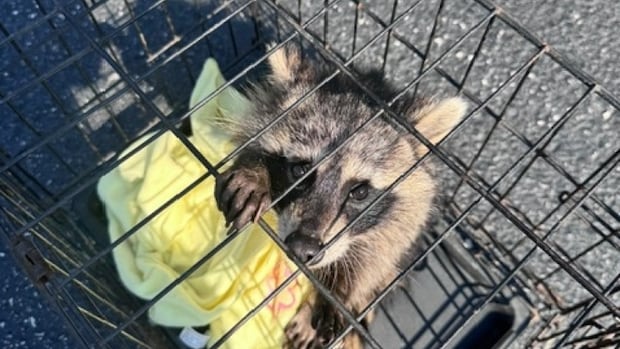The Current23:59What are animals saying? AI is helping to decode
Bottlenose dolphins are known for their intelligence, and now researchers are trying to find out whether we could one day communicate with them in their own language.
Researchers from Woods Hole Oceanographic Institution (WHOI) in Massachusetts and the Sarasota Dolphin Research Program in Florida are using artificial intelligence to decode the meaning behind dolphin whistles.
“Our objective is to understand their rules of communication, what the structure, function, and meaning of dolphin communication is,” Frants Havmann Jensen, an investigator at WHOI’s Marine Research Facility, told The Current’s Matt Galloway.
“So, not just identifying the sounds they make but uncovering what those sounds mean to them.”
In May, the researchers were awarded the Coller Dolittle Challenge for Interspecies Two-Way Communication for that work. It honours researchers who’ve made significant scientific advances that could pave the way for human-animal communication.
Yossi Yovel, who led the judging panel for the Coller Dolittle prize, says the Jeremy Coller Foundation is interested in unlocking a deeper understanding of language, across species.
“By understanding how communication has evolved across many different species, we can better understand the evolutionary roots of communication and language,” he said.
Yovel says understanding the signals and the messages they convey is a crucial first step to decoding bottlenose dolphins’ communication system.
From there, scientists can begin to understand how dolphins organize signals when they’re communicating to create what humans would understand as sentences.
“The next step would be to present signals that you’ve discovered to the animal and observe their response, and to show that you can do this in multiple contexts,” he said.
Using AI to enhance understanding
The Sarasota Dolphin Research Program is conducting the world’s longest-running study of a wild dolphin population. Since 1970, they’ve built a database of sounds from over 300 dolphins.
Jensen says bottlenose dolphins have distinct, individual sounds researchers call signature whistles.
“It’s the dolphin equivalent of a human name. Dolphins use these signature whistles to maintain social bonds and recognize each other,” he said.
Dolphins also make non-signature whistles, which comprise approximately 50 per cent of the whistles they produce, but there’s little research in this area. The study published by the winning team suggests that the non-signature whistles could function like words with mutually understood, context-specific meanings.
Jensen says AI can help researchers decode the dolphins’s communication by automatically detecting and discovering new shared whistle types.
“We’re looking into how to use it for identifying patterns of use across individuals and contexts so that we can begin to infer meaning from how dolphins use these,” he said.
Jensen and other researchers say one of AI’s strengths is its ability to process large amounts of data.
Sophie Cohen-Bodénès and her team at Washington University in St. Louis, Mo., — who were shortlisted for the prize — are using AI to decipher patterns in cuttlefish arm wave signals, a form of sign language.

Through non-invasive behavioural experiments, Cohen-Bodénès examined that the creatures interpret arm signs using vision and vibrations.
“We’re in the process of collecting large datasets from many behavioural contexts to give to the AI algorithm that could find, in an objective way, the different correlations between different arm signs,” she said.
Cohen-Bodénès says her research goal is to gain more insight into the meaning of animal communication displays and their underlying sensory mechanisms.
“It’s a way to better assess their welfare, to better understand their needs and to improve their protection.”
Marine mammal expert Ashley Noseworthy recounts the moment a pod of dolphins greeted the SpaceX capsule carrying NASA astronauts returning from nine months stuck in space.
Limits of AI
Yovel says AI is a powerful tool but it has shortcomings.
When researchers consider the meaning and context of their findings, he says they base them on human observations, which could be limited or wrong.
Yovel believes humans might be able to communicate with animals, but he’s skeptical that AI could be used in a device or algorithm that would allow them to have a conversation.
Quirks and Quarks8:16Dolphins whistle at each other to keep in touch with distant friends
Human communication is complicated and allows people to discuss a wide range of topics, and Yovel doubts animal communication systems are as complex.
“We have this language, which is extremely complex, and it seems to stand out in comparison to other animal communication systems,” he said.
In order to understand whether human language systems stand out and how, Yovel says humans need a better understanding of nature.
“The more we study, the more we appreciate animal complexity, I think that’s one of the main goals of this prize.”







